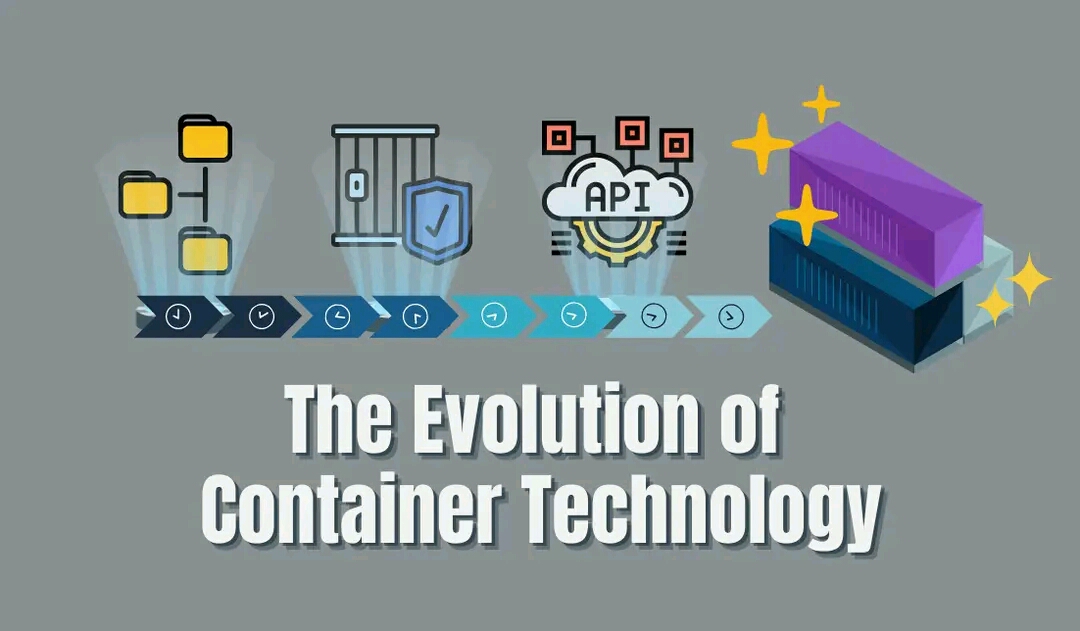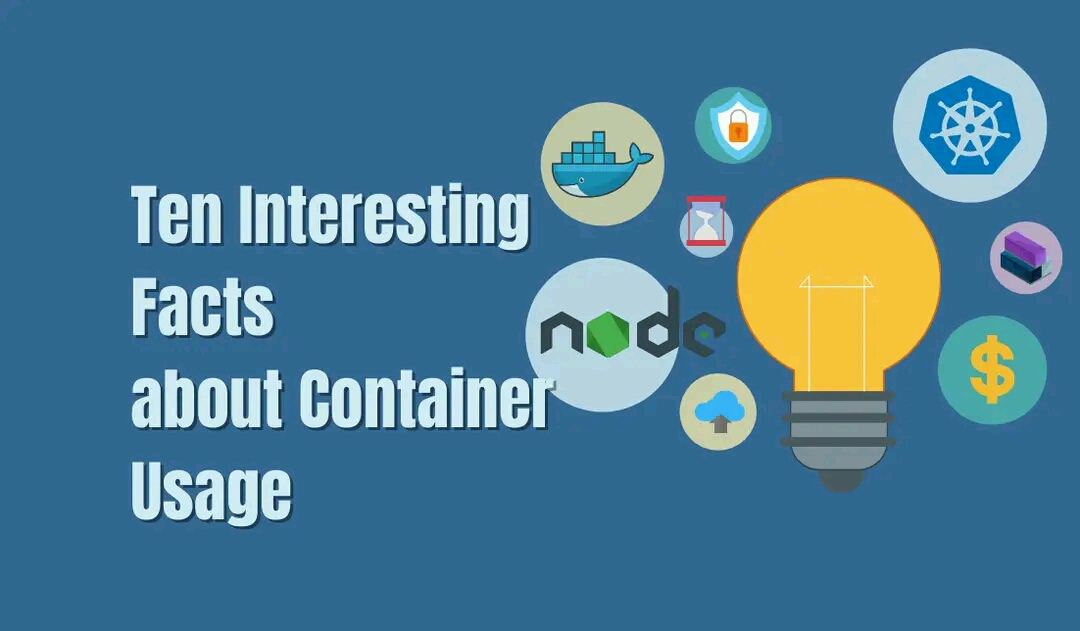Evolution And Facts of Container Technology

Evolution And Facts of Container Technology
Just as in shipping industries, which are using physical containers to isolate different cargos, to transport in ships and trains, also, software development technologies increasingly use an approach called containerization.
A standard package of software, known as a container, bundles an application’s code together with the related configuration files and libraries, and with the dependencies required for the app to run. This allows developers and IT pros to deploy applications seamlessly across environments.
Container Technology is always referred to as the operating system virtualization as it can run a software, microservice, or an application.
A container technology is a lightweight, executable unit of software that packs up application code and dependencies such as binary code, libraries, and configuration files for easy deployment across different computing environments.
Evolution And Facts of Container Technology

Evolution of Container Technology
The take over of containers in the IT industry might seem abrupt for others. It is a seemingly new technology compared to the other virtualization concepts. But, would you believe the evolution of containers and containerization goes way back to the late ’70s?
Yes, the journey to fame of containers started more than 40 years ago. And it’s just recently that we started to embrace what container has to offer. Let’s take a look at evolution of containers through the years until it finally sailed with Dockers and Kubernetes.
1979
During the development of the OS Unix version 7, the Chroot was also introduced. Chroot marked the beginning of the concept of isolation. It changes the root directory of a process and its children to a different file system. So, it can isolate the file access of each process.
Back then, Chroot’s X-Factor is security. If the internal system is compromised the security threat could be contained. And the system could prevent the spread externally. It took 3 more years to develop the Chroot. Then it was finally added to the BSD in 1982.
2000
Almost two decades later, a shared-environment hosting provider pitch an idea called FreeBSD Jails. This aims to separate the services of their company from their customers.
FreeBSD Jails allowed IT admins to partition the whole computer system into several smaller systems. Which they referred to as “jails”. This shed more light on how isolating services could be beneficial.
2001
Linux, through VServer, adopted the concept of jails. They partitioned files, networks, addresses, and other resources on a computer system. This OS virtualization was done by patching the core Linux kernel.
2003
From the mechanism footsteps of Linux VServer, Google introduced the Borg. Their very own cluster management system. Back then, security is not really the main concern. Activities inside the machine cluster are fully visible. Which enables the accounting system to see which process is using the most memory.
2004
The first public beta version of Solaris Containers was released in 2004. It combined the concept of system resource partitioning and boundary separation by zones. In addition, it enabled the feature of snapshots and ZFS (former Zettabyte File System) cloning.
2006
Google launched Process Containers this year. Its features include limiting and isolating the usage of resources like CPU, memory disk, and network in a collection of processes. Later on, it became Control Group (cgroups). Which Linux adopted.
2008
Linux Container (LXC) emerged. It is the first and most complete release of the Linux container manager. It is a combination of cgroups as the system model and Namespace for network security. Moreover, Namespace was able to hide the user’s and group’s activities from others outside the container.
2011
Using LXC, CloudFoundry introduced Warden. It can separate environments on any operating system. And provide an API for container management. It can manage a collection of containers across multiple hosts.
Later on, LXC was replaced by its own implementation.
2013
The launch of Docker in 2013 started the whirlwind rise to fame of containers. The very reason why Docker and containers always go hand-in-hand nowadays.
Docker also used LXC during the early stage. What sets Docker apart is the user-friendly GUI. And it’s the ability to run apps with different OS requirements in same OS kernel.
2016
Hesitation due to security concerns arose in the IT community regarding the use of containers. At this point, the industry have already adopted container-based application. Unfortunately, as systems became more complex, the risks became bigger.
The Dirty Cow bug only made this security buzz even louder. This bug in the Linux system can allow a user to elevate access privileges and perform certain tasks on containers.
On the good side, vulnerabilities like this pushed the community to further improve container security practices.
2017
Container management tools are slowly maturing at this point. With the number of developers adopting containers, there was a need for a platform that can ease the container management processes.
Google also launched Kubernetes this year. It supported the increasingly complex application and enabled enterprises to move to hybrid cloud and microservices. It also introduced the automated container management. In a conference, Docker announced their support for Kubernetes as an orchestrator. Soon, Azure and AWS quickly followed.
2019
With the combination of Kubernetes and Docker in running and managing containers, the shift to containerization was steadily growing. The infrastructure provider, VMware adopted Kubernetes.
After that, it allowed enterprises to take advantage of cloud-like capabilities on their on-prem environments. Advancements on server less technology were also evident this year. As well as Kubernetes-based hybrid-cloud solutions. These technologies successfully merged the cloud and on-premise environments through clusters of containers.
Future of Containers
Data prediction suggests that in a few more years, there will be 50% more container-based workload running on different platforms. And the container market will rise to an even higher mark of $8 billion.
Containers had a long run in evolution. And there certainly will be more to come. With more providers and enterprises adopting containerization and Kubernetes, we’ll definitely see more evolution of containers along the way.
Evolution And Facts of Container Technology

Interesting Facts About Container Usage
Container technologies have taken the IT industry by storm. It has become so popular that when you ask Goggle the meaning of container, it says it’s a standard unit of software. And when asked what it contains, the answer is executables, binary codes, and libraries. Years ago, these are just large storage for shipping items. Now, it’s one of the best solutions in IT operations. Let’s dig and discover some more interesting facts about containers.
Containers can speed up almost all parts of DevOps.
The use of containers was able to erase the long-running issue “…but it works on my machine”. Containers eliminate the need to match your machine to the test or production environment. Thus, less time and less deployment fail. With the right platform, it could literally just take seconds to deploy containers to production.
Container is not Docker. And Docker is not Kubernetes.
Google common searches reveal that “container vs. Docker vs. Kubernetes” has been looked up a couple of times. To clear this, Docker is a platform where you can build and deploy containers. While Kubernetes is to orchestrate created containers. Docker has been constantly associated with containers since it is the most used platform for containerization.
An average of 1.5 million containers are on Docker every day.
Lots of developers have already shifted to using containers instead of VMs, which explains this massive number. The highest number of containers created in a day by a single user is 92,000.
Kubernetes is continuously rising with containerization.
From the last study of DataDog, almost half of container users are using Kubernetes orchestration. This is a steady 10% increase from the 2018’s data.
Container Deployment in Docker increased by 75%.
Data suggests that Docker users deployed 75% more containers compared to last year. This was due to the implementation of easier deployment in Docker.
Some containers only last for hours.
The ephemeral or short-term nature of containers is one reason why it is well-loved by developers. Typically, the lifespan of a container in Docker lasts for about 2.5 days. While some AWS Lambda containers only last for around one hour. Container lifespan is from the point it is created until it was terminated after performing its function.
Node.js dominates containerized application in Docker.
According to DataDog, 57% of organizations with apps working in containers are using Node.js as the programming language. Only half of that number prefer Node.js when working on a non-containerized application.
The most used Kubernetes version is not the latest version.
40% of Kubernetes users still uses the version 1.13. It is the seventh to the last release, with v1.19 being the latest.
NGINX is the most widely used Docker image.
Since 2015, around 35% of Dockers users have deployed NGINX images to run HTTP servers. Redis and Postgres, which are for databases, were the next in ranking.
Orchestrated containers churn 12x faster.
The use of orchestrators seems to cause containers to have a shorter lifespan. An orchestrated container typically lasts for 12 hours compared to the typical 2.5 days of containers in Docker. Shorter lifespans may cause challenges in maintaining and monitoring containing. It could also mean that automation is effective in speeding up the container lifecycle.
SEE ALSO : What Is End-to-End Encryption?
Hope you find this post on Evolution And Facts of Container Technology helpful?
Comments are closed.